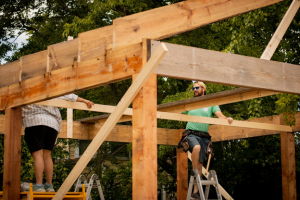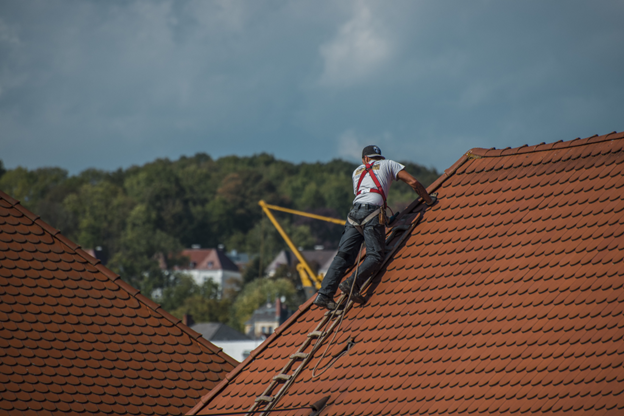A sturdy roof is one of the most crucial components of any home. Without a properly installed roof, your home is vulnerable to weather damage, energy inefficiency, and long-term structural issues. In this blog post, we’ll guide you through six essential tips for installing a roof that stands the test of time. Whether you’re a homeowner or a contractor, these insights will ensure your roof installation is seamless and effective.
1. Choosing the Right Material for Your Roof
Understanding Your Options
When it comes to roofing materials, there are several choices available, each with its own advantages and drawbacks. Common options include asphalt shingles, metal roofing, clay tiles, and wood shakes. Your choice should depend on factors such as budget, climate, and architectural style.
Considering Durability and Maintenance
Different materials offer varying levels of durability and maintenance needs. For example, metal roofs are known for their longevity and low maintenance, whereas wood shakes require regular upkeep to prevent mold and rot. Asphalt shingles are popular due to their balance of cost-effectiveness and durability.
Aesthetic Appeal
Don’t forget to consider the aesthetic appeal of the roofing material. Your roof is a significant part of your home’s exterior, so choose a material that complements your house’s design. Clay tiles, for example, offer a unique, classic look, while metal roofing can provide a sleek, modern appearance.
2. Hiring the Correct Contractor
Research and Recommendations
Selecting the right contractor is vital for a successful roof installation. Start by researching local contractors and seeking recommendations from friends or family. Moreover, when it comes to roof installations, experience is key, so choose a contractor with a proven track record. Not only will this ensure quality work, but it will also provide peace of mind.
Checking Credentials
Ensure the contractor you choose is licensed, insured, and bonded. This not only protects you from potential liabilities but also ensures that the contractor meets industry standards. Ask for proof of insurance and verify their license with local authorities.
Getting Detailed Estimates
Before committing, obtain detailed estimates from multiple contractors. This helps you compare pricing and services offered. Be wary of unusually low bids, as they might indicate subpar materials or workmanship. A detailed estimate should include the cost of materials, labor, and any additional fees.
3. Understanding the Installation Process
Pre-Installation Preparation
Preparation is key to a smooth installation process. Ensure your attic is properly ventilated and the roof deck is in good condition. Remove any debris or old roofing materials to create a clean surface for the new roof.
The Installation Steps
Familiarize yourself with the installation steps to better understand what to expect. The process typically involves laying down a protective underlayment, installing the chosen roofing material, and securing flashing around vents and chimneys. Knowing these steps helps you monitor progress and ensure quality work.
Communication with Your Contractor
Maintain open communication with your contractor throughout the installation. Regular updates and addressing any concerns promptly can prevent misunderstandings and ensure the project stays on track. Don’t hesitate to ask questions or request clarifications on any aspect of the process.
4. Importance of Proper Ventilation
Ensuring Adequate Airflow
Proper ventilation is crucial for the longevity and efficiency of your roof. It prevents heat and moisture buildup in the attic, reducing the risk of mold growth and roof deterioration. Ensure your roof has adequate intake and exhaust vents to promote healthy airflow.
Benefits of Ventilation
Good ventilation extends the life of your roofing materials by preventing excessive heat buildup, which can cause shingles to warp or crack. It also improves energy efficiency by reducing the load on your HVAC system, leading to lower energy bills.
Common Ventilation Systems
There are various ventilation systems available, including ridge vents, soffit vents, and gable vents. Consult with your contractor to determine the best system for your roof type and climate. Proper installation of these vents is essential for maximum effectiveness.
5. Addressing Waterproofing and Insulation
Importance of Waterproofing
Waterproofing is critical to prevent leaks and water damage. This involves installing a waterproof barrier beneath the roofing material to protect the roof deck. Materials like synthetic underlayment and ice and water shields are commonly used for this purpose.
Effective Insulation
Insulation plays a vital role in maintaining indoor comfort and energy efficiency. Proper insulation prevents heat loss in winter and keeps your home cool in summer. Ensure your attic is adequately insulated to complement the waterproofing measures.
Combining Waterproofing and Insulation
Combining effective waterproofing and insulation creates a robust defense against weather elements. This combination keeps your home dry, reduces energy consumption, and enhances overall comfort. Regularly inspect these components to ensure they remain in good condition.
6. Regular Maintenance for Longevity
Routine Inspections
Regular roof inspections are essential for identifying potential issues before they become major problems. Schedule annual inspections with a professional to check for signs of damage, such as missing shingles, cracks, or leaks.
Cleaning and Debris Removal
Keep your roof clean and free of debris. Leaves, branches, and dirt can accumulate and cause water to pool, leading to leaks and damage. Regularly clean your gutters and remove any buildup to ensure proper drainage.
Prompt Repairs
Address any minor repairs immediately to prevent them from escalating. Small issues like a loose shingle or minor leak can quickly turn into costly repairs if left unattended. Timely maintenance extends the life of your roof and saves you money in the long run.

Installing a roof is a significant investment in your home’s future. By following these six essential tips, you can ensure a successful installation that provides lasting protection and value. Remember to choose the right materials, hire a reputable contractor, understand the installation process, prioritize ventilation, address waterproofing and insulation, and commit to regular maintenance.
Taking these steps will not only enhance your home’s curb appeal but also its structural integrity and energy efficiency. For personalized advice and expert guidance, consider booking a consultation with a professional roofing service. Your home’s roof is in your hands, so make informed decisions to protect your investment for years to come.

